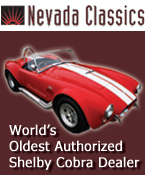 
 Main Menu
Main Menu
|
 Nevada Classics
Nevada Classics
|
 Advertise at CC
Advertise at CC
|
 February 2025
February 2025
|
| S |
M |
T |
W |
T |
F |
S |
| |
|
|
|
|
|
1 |
| 2 |
3 |
4 |
5 |
6 |
7 |
8 |
| 9 |
10 |
11 |
12 |
13 |
14 |
15 |
| 16 |
17 |
18 |
19 |
20 |
21 |
22 |
| 23 |
24 |
25 |
26 |
27 |
28 |
|
|
 CC Advertisers
CC Advertisers
|
|
 12Likes 12Likes

03-12-2017, 08:13 AM
|
|
CC Member

|
|
|
Join Date: May 2006
Location: St. Louisville,
Oh
Cobra Make, Engine: A&C 67 427 cobra SB
Posts: 2,445
|
|

 Not Ranked
Not Ranked
Quote:
Originally Posted by patrickt

It's not even that close any more.... I don't think I even opened the secondaries more than maybe twice last year.  |
Well, I've been told that owning a Cobra is just a replacement for a less than fulfilling sex life. It may be true because people around here talk like hearing an FE at full song, winding to 7500 rpm, is 10 times more potent than Viagra. That said I must diagnose your problem as a lack of or low libido. 
Don't feel bad. Me too.  |
-
Advertising


03-12-2017, 08:45 AM
|
 |
CC Member

|
|
|
Join Date: Apr 2009
Location: Little Rock area,
AR
Cobra Make, Engine: ERA Street Roadster #782 with 459 cu in FE KC engine, toploader, 3.31
Posts: 4,527
|
|

 Not Ranked
Not Ranked
Think about Bruce's CSX3170 that I think he has been running a 482 in recently, and he turns it to 8200 rpm. Apparently he hasn't had any problems with a 4.25 inch crank. I think he is building a +500 FE now shooting for 9000 rpm
Last edited by DanEC; 03-12-2017 at 08:55 AM..
Reason: Corrected rpm for prior engine - my bad memory
|

03-12-2017, 09:51 AM
|
|
CC Member

|
|
|
Join Date: May 2006
Location: St. Louisville,
Oh
Cobra Make, Engine: A&C 67 427 cobra SB
Posts: 2,445
|
|

 Not Ranked
Not Ranked
Now we are talking big dollars. We kind of started out with a question of 4.125 verse a 4.25 stroke. It pretty much costs the same to do either. If you want to spin high, say 9000 or 10000 rpm, the price tag goes up exponentially. Doing it with an FE will cost more than a lot of other engine families, that is for sure.
Personally I would be hesitant to spin 4"+ stroke FEs much past 6K rpm. It's not because I do not think it can be done, rather it is because it costs a lot of money, and when it fails, all the money is gone. For me it is like setting $10K on a roulette wheel. I derive no pleasure from the thrill of gambling (in my mind loosing my money). However I pass no judgement on those who do. Those who build and run these engines, I admire.
|

03-12-2017, 02:27 PM
|
|
CC Member

|
|
|
Join Date: Oct 2000
Location: Crystal Lake,
IL
Cobra Make, Engine: Everett-Morrison, 434 cid
Posts: 977
|
|

 Not Ranked
Not Ranked
Quote:
Originally Posted by DanEC

Think about Bruce's CSX3170 that I think he has been running a 482 in recently, and he turns it to 8200 rpm. Apparently he hasn't had any problems with a 4.25 inch crank. I think he is building a +500 FE now shooting for 9000 rpm
|
I think he's building a 440 cid... 3.75" stroke, small journal, lightweight stuff. |

03-12-2017, 10:00 PM
|
|
CC Member

|
|
|
Join Date: Jan 2002
Location: Cooper City,
FL
Cobra Make, Engine: Contemporary Classics, red white stripes
Posts: 139
|
|

 Not Ranked
Not Ranked
 Will Kooiman
Will Kooiman
I've spun 428s past 6,000 lots of times, and I wasn't worried about blowing them up. They didn't feel lazy either - even with stock/heavy pistons In fact, they revved faster than many of the 302s that I've had in the past.
That's with a 3.98 stroke vs. 3.00 for the 302.
I just bought a 4.25" for my 427, because it was easier to get a decent compression ratio with flat top pistons. I was going to buy a stock 3.78" stroke because I don't need more HP in a Cobra. It's a custom order, though, and as mentioned, I'd have to run pop-up pistons to get over 10:1 CR.
We each buy parts for different reasons. But it does get old hearing the myth that strokers don't rev.
Btw, I also have a 4" crank in a 351C. I'm more worried about the stock block than I am that it won't rev.
|

03-12-2017, 10:47 PM
|
|
CC Member

|
|
|
Join Date: Apr 2007
Cobra Make, Engine:
Posts: 1,009
|
|

 Not Ranked
Not Ranked
 Stroke
Stroke
Quote:
Originally Posted by scottj

I think he's building a 440 cid... 3.75" stroke, small journal, lightweight stuff.
|
Correct, going down to a 3.75" stroke and small journal light weight crank and rods to be able to turn 9300 reliably. My main goal was rpm because torque has never been an issue the 498" engine made 632@ 5750. I need to run a 4.88 gear and still be able to get 68 mph in first gear. This is just for Goodguys autox because the turns are so slow the engine was down to 1900 rpm with a 4.27 gear and had no port velocity. A very specialized case because we don't shift (it wastes time).
The long stroke engine was great everywhere else so I would not argue about power or torque. I will be giving up both in search of rpm, and the damn thing might be slower, it is a gamble but we need to pick up some time. I will share dyno numbers and in car performance when we get it done probably in April. I have acceleration data with this particular tire size and compound so can share actual in car data from both engines. We are using the same intake lobe and valve spring so the only limit I was worried about was piston speed. I like a safety factor so we never went over 8200. The new engine should be good to 9300. Rods are lighter, pistons are lighter and the crank is much lighter. Smaller Journals, smaller wrist pins and smaller rod sections.
The old one reved very quickly, don't know how the new one will be but we will see. On a street engine I would definitely go big free torque and HP! |

03-13-2017, 06:03 AM
|
 |
CC Member

|
|
|
Join Date: Apr 2009
Location: Little Rock area,
AR
Cobra Make, Engine: ERA Street Roadster #782 with 459 cu in FE KC engine, toploader, 3.31
Posts: 4,527
|
|

 Not Ranked
Not Ranked
[quote=Cobra #3170;1417970]Correct, going down to a 3.75" stroke and small journal light weight crank and rods to be able to turn 9300 reliably. /[quote]
Sorry for the mis-quote on engine size. Stupid head crap I've had for the last week has me hallucinating I guess.
|

03-13-2017, 11:14 AM
|
 |
CC Member

|
|
|
Join Date: Feb 2014
Location: White City,
SK
Cobra Make, Engine: West Coast, 460 CID
Posts: 2,915
|
|

 Not Ranked
Not Ranked
Quote:
Originally Posted by olddog

Well I spent an hour writing a masterpiece on the subject - from my perspective, and I forgot to save it in a paste buffer before clicking reply. When it forced me to log in a second time, it all PHUCKING DISAPPEARED! Why this site logs you out after a few minutes I don't know, but it is annoying.
|
I'm not having the problem you describe - I can stay logged in for hours or days.
Hint: Check the 'Remember Me?' box before you click the 'Log in' button.
__________________
Brian
|

03-13-2017, 04:48 PM
|
 |
CC Member

|
|
|
Join Date: Feb 2017
Location: Ewa Beach,
HI
Cobra Make, Engine: 1966 Street Beasts Cobra 427 S/C, 502 cid
Posts: 121
|
|

 Not Ranked
Not Ranked

Here are a few excerpts taken from an article written by David Reher of Reher-Morrison Racing Engines. His discussion centers around small bore, long stroke engines versus large bore, short stroke engines used in drag racing, so you'll really have to "read between the lines" to pick out the information that applies here. My understanding, after reading what he has to say, is that if you're not limited in engine size, then go with the largest bore engine you can afford, and use a long stroke crankshaft. He points out two possible cons of a long stroke engine: 1) parasitic ring drag (which, in the long term, could accelerate engine wear in a street car), and 2) windage and oil foaming. However, street engines aren't typically called upon to rev in excess of 9000 rpm like a Reher-Morrison engine.
---------------------------------------------------------------------------------
If you are building an engine for maximum output at a specific displacement, such as a Comp eliminator motor, then the bores should be as big as possible and the stroke as short as possible. If you’re building an engine that’s not restricted in size, such as a heads-up Super eliminator or Quick 16 motor, then big bores are an absolute performance bargain.
The mechanical leverage of an engine is greatest at the point when the connecting rod is perpendicular to its respective crank throw; depending on the geometry of the crank, piston and rod, this typically occurs when the piston is about 80 degrees after top dead center (ATDC). So if torque is what accelerates a race car, why don’t we use engines with 2-inch diameter cylinder bores and 6-inch long crankshaft strokes? Obviously, there are other factors involved.
The first consideration is that the cylinder pressure produced by the expanding gases reaches its peak shortly after combustion begins, when the volume above the piston is still relatively small and the lever arm created by the piston, rod and crank pin is an acute angle of less than 90 degrees. Peak cylinder pressure occurs at approximately 30 degrees ATDC, and drops dramatically by the time that the rod has its maximum leverage against the crank arm. Consequently the mechanical torque advantage of a long stroke is significantly diminished by the reduced force that’s pushing against the piston when the leverage of a long crankshaft stroke is greatest.
A short crankshaft stroke reduces parasitic losses. Ring drag is the major source of internal friction. With a shorter stroke, the pistons don’t travel as far with every revolution. The crankshaft assembly also rotates in a smaller arc so the windage is reduced. In a wet-sump engine, a shorter stroke also cuts down on oil pressure problems caused by windage and oil aeration.
A sportsman drag racer can enjoy the benefits of big cylinder bores at no extra cost: a set of pistons for 4.500-inch, 4.600-inch or 4.625-inch cylinders cost virtually the same. For my money, the bigger bore is a bargain. The customer not only gets more cubic inches for the same price, but also gets better performance because the larger bores improve airflow. A big-bore engine delivers more bang for the buck.
__________________
Todd
|
 Posting Rules
Posting Rules
|
You may not post new threads
You may not post replies
You may not post attachments
You may not edit your posts
HTML code is Off
|
|
|
All times are GMT -7. The time now is 03:54 AM.
|





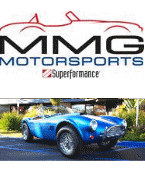

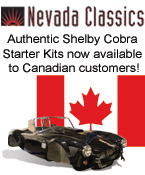
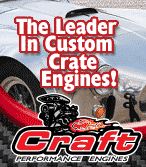
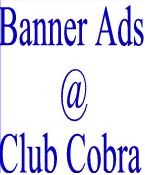
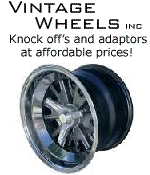
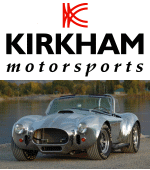

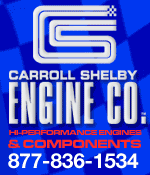
 12Likes
12Likes








 Linear Mode
Linear Mode



